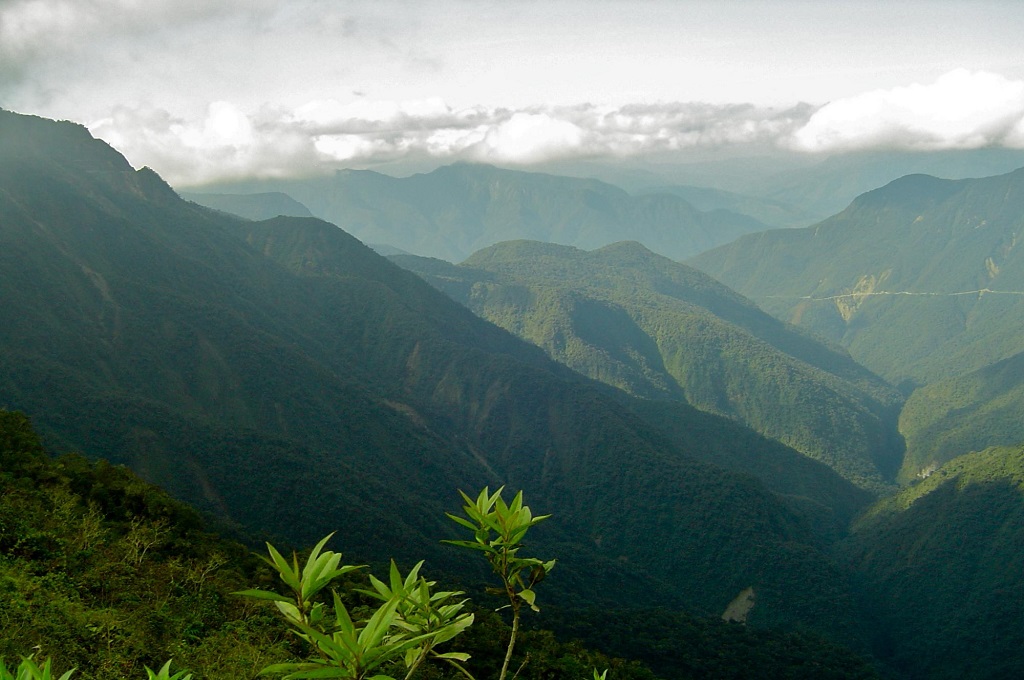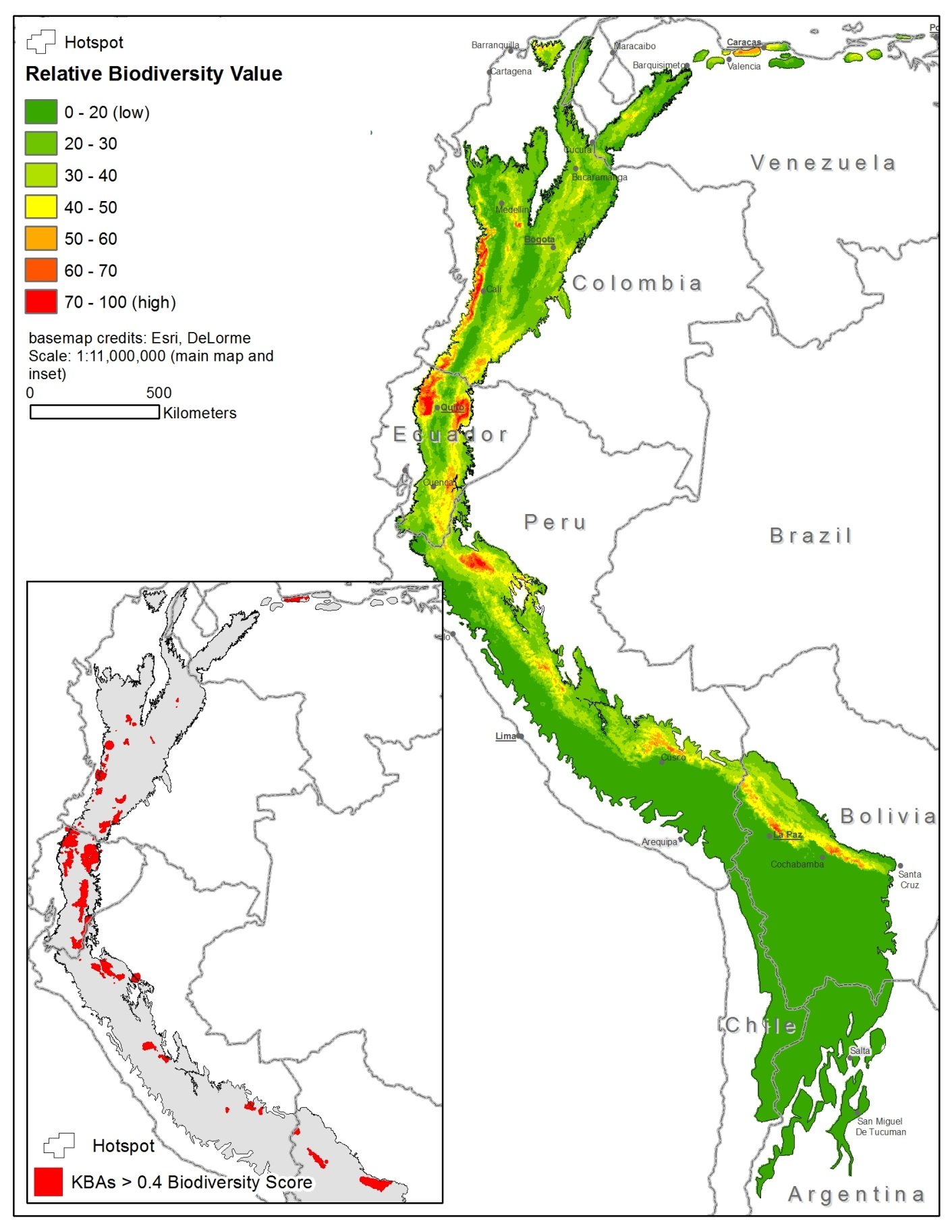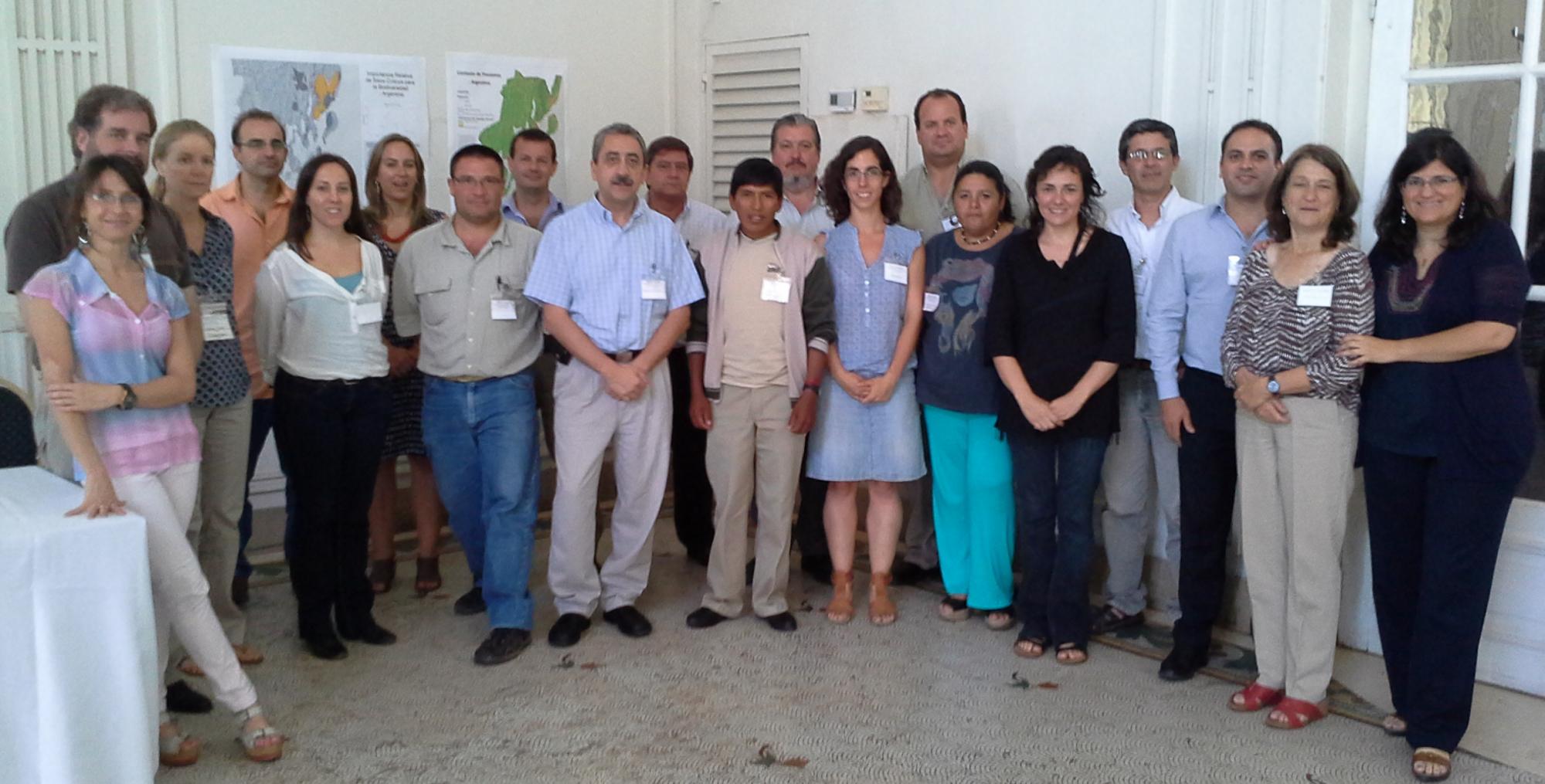 The region spans 30 million acres reaching from western Venezuela down to northern Chile and Argentina, encompassing the great highs and lows of the Andes mountain range. With its snowcapped peaks, steep slopes, deep canyons, and isolated valleys, this region harbors landscapes that have led to the evolution of an awe-inspiring diversity of habitats and species.
The region spans 30 million acres reaching from western Venezuela down to northern Chile and Argentina, encompassing the great highs and lows of the Andes mountain range. With its snowcapped peaks, steep slopes, deep canyons, and isolated valleys, this region harbors landscapes that have led to the evolution of an awe-inspiring diversity of habitats and species.
 NatureServe recently completed a comprehensive analysis of this biodiversity hotspot. The resulting Ecosystem Profile will be used by the Critical Ecosystem Partnership Fund (CEPF) to steer millions of dollars in grants towards the most urgent conservation priorities over the next five years. The Ecosystem Profile is a snapshot describing the condition of, and threats to, biodiversity throughout the hotspot, as well as the capacity of nonprofits to engage with government agencies as partners in conservation.
NatureServe recently completed a comprehensive analysis of this biodiversity hotspot. The resulting Ecosystem Profile will be used by the Critical Ecosystem Partnership Fund (CEPF) to steer millions of dollars in grants towards the most urgent conservation priorities over the next five years. The Ecosystem Profile is a snapshot describing the condition of, and threats to, biodiversity throughout the hotspot, as well as the capacity of nonprofits to engage with government agencies as partners in conservation.
CEPF plans to invest upwards of $10 million to fund conservation activities and sustainable economic development in the region. But first they needed NatureServe’s help to understand the full range of biological and habitat features that exist throughout the massive and varied expanse, home to the rare spectacled bear and primeval cloud forests. In building the profile for CEPF, NatureServe’s project team:
- Secured broad-based scientific agreement on the biological priorities for conservation
- Described the social and economic factors that drive threats to the natural resources
- Defined the baseline biological indicators that will be used by the CEPF to monitor its grants
Our team for the initiative included species scientists, ecologists, and our Latin American partners. EcoDecision, a nonprofit organization based in Ecuador, led the analysis of the socioeconomic, political, and conservation finance factors.
Together, NatureServe and EcoDecision hosted workshops in seven Andean countries, amassing the perspectives, priorities, and needs of local stakeholders such as grassroots non-governmental organizations and community groups, as well as government agencies, the private sector, donors, and international civic groups.
